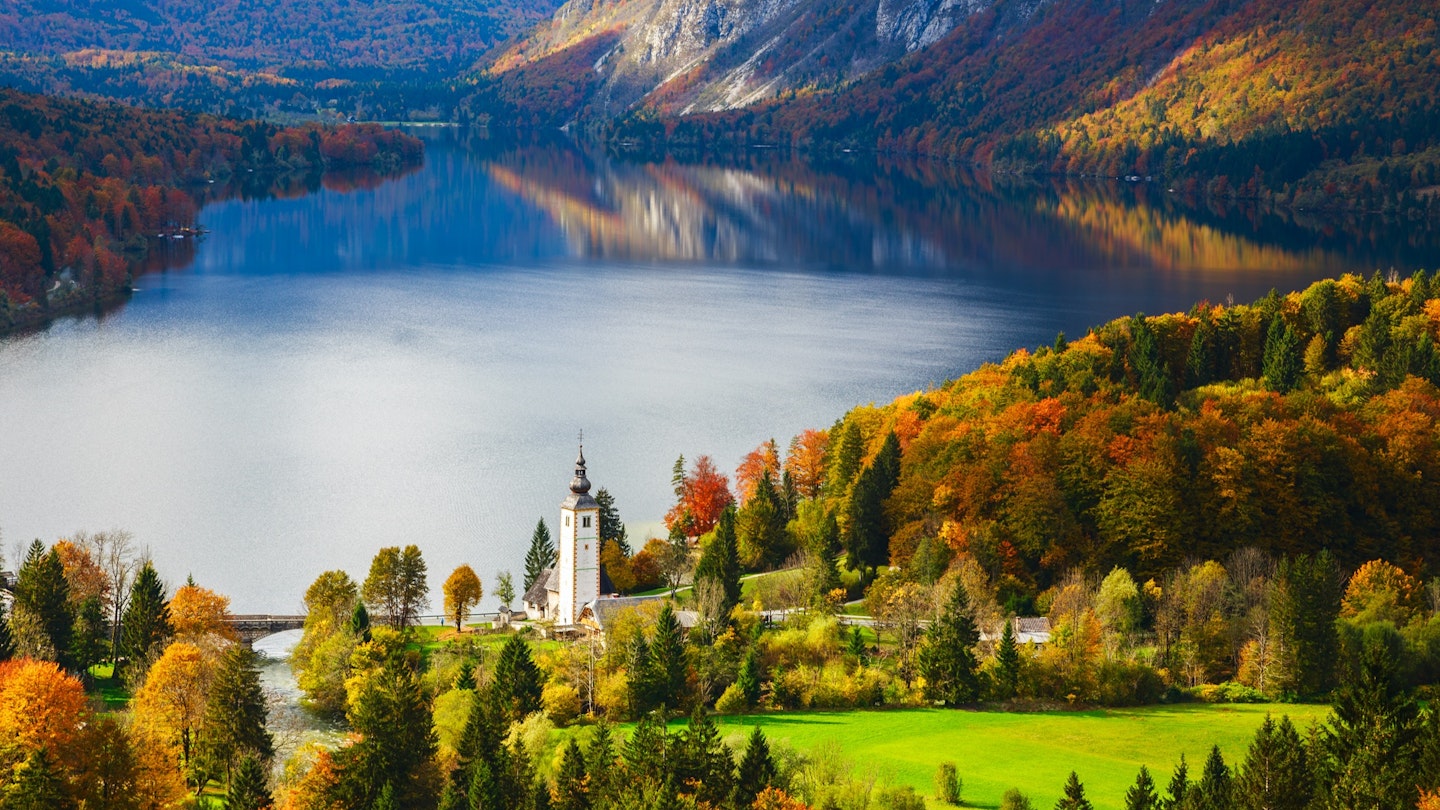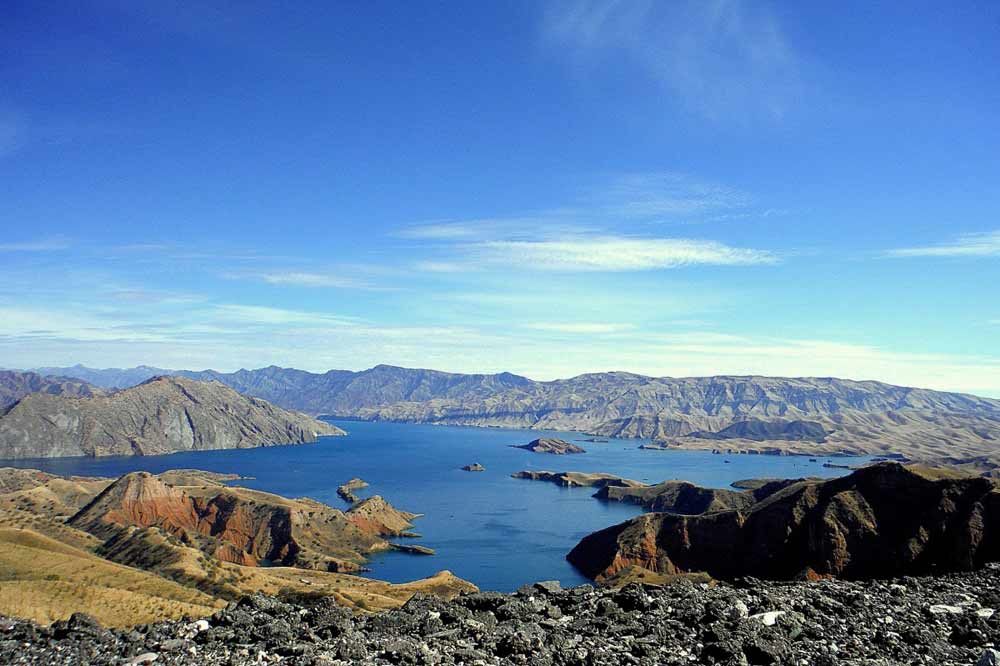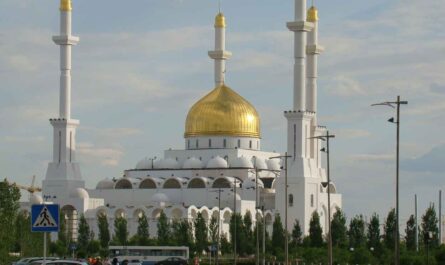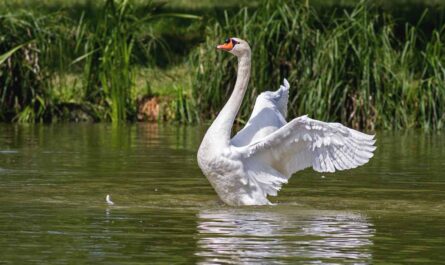What are some of the interesting facts about Slovenia? Slovenia, a picturesque gem in Central Europe, is renowned for its stunning landscapes, rich cultural heritage, and dynamic history. Nestled between Italy, Austria, Hungary, and Croatia, this small yet diverse country offers a unique blend of Mediterranean, Alpine, and Pannonian climates and cultures. Its capital, Ljubljana, epitomizes the nation’s charm with a blend of Baroque architecture, vibrant café culture, and a youthful, creative spirit. Slovenia boasts a myriad of natural wonders, from the majestic Julian Alps and the breathtaking Lake Bled to the expansive Triglav National Park and the enchanting Postojna Cave. In this article, I will talk about some interesting facts about Slovenia.
Interesting Facts About Slovenia: History, Culture, Travel
As one of the greenest countries in the world, it prioritizes sustainable tourism, preserving its pristine environment for future generations. The Slovenian people, known for their hospitality and resilience, have nurtured a rich tapestry of traditions and modern innovations. With its thriving economy, emphasis on outdoor activities, and commitment to ecological balance, Slovenia stands out as a compelling destination for travelers and a model for sustainable living. Here are some interesting facts about Slovenia:
1. Alpine Adventure and Adriatic Charm
Slovenia is a country blessed with a remarkable and diverse landscape, where nature’s beauty is on full display. The towering Alpine peaks dominate the northern regions, their snow-capped summits offering a striking contrast against the lush, green valleys below. These valleys are crisscrossed with pristine rivers and dotted with charming villages, each one offering a unique glimpse into Slovenian rural life.
Moving southward, the terrain transitions dramatically towards the coast, where the sparkling waters of the Adriatic Sea lap against Slovenia’s short but stunning coastline. Here, visitors can enjoy the warm Mediterranean climate, stroll along pebble-strewn beaches, and explore quaint coastal towns. This blend of alpine majesty and Adriatic allure makes Slovenia a perfect destination for nature lovers and adventure seekers alike. Whether you are hiking in the mountains, biking through the valleys, or sailing on the sea, Slovenia’s landscapes are sure to leave you spellbound.
2. Ljubljana: A Compact and Vibrant Capital
Ljubljana, the capital of Slovenia, is a small but vibrant city that captures the essence of the country’s charm. The city center is a pedestrian-friendly zone, allowing visitors to explore its many attractions on foot with ease. The architecture here is a delightful mix of baroque, art nouveau, and modern styles, each building telling a part of Ljubljana’s rich history. The Ljubljana Castle, perched on a hill, offers panoramic views of the city and the surrounding countryside.
Below, the Ljubljanica River winds through the city, its banks lined with cafes, restaurants, and lively markets. The cultural scene in Ljubljana is equally vibrant, with numerous theaters, museums, and galleries showcasing Slovenian and international art and culture. Throughout the year, the city hosts a variety of festivals and events, from music and film festivals to traditional fairs and parades, making it a lively and engaging place to visit.
3. Postojna Cave: A Subterranean Wonderland
Postojna Cave is one of Slovenia’s most fascinating natural attractions, drawing visitors from around the world to its underground marvels. This extensive cave system stretches for over 24,000 meters, filled with awe-inspiring stalactites, stalagmites, and other intricate formations that have been sculpted over millions of years. A visit to Postojna Cave typically begins with a thrilling ride on an underground train, which takes you deep into the heart of the cave.
From there, guided tours lead you through a series of chambers and passages, each more spectacular than the last. The concert hall, a vast cavern with excellent acoustics, is a highlight, often used for musical performances. The cave is also home to the unique and mysterious olm, a blind amphibian that has adapted to life in the dark. Exploring Postojna Cave offers a unique glimpse into the hidden world beneath our feet and the incredible natural processes that create such wonders.
4. Lake Bled: A Fairytale Setting
Lake Bled is perhaps the most iconic and picturesque destination in Slovenia, often likened to a scene straight out of a fairytale. The lake itself is a tranquil body of water, surrounded by lush forests and overlooked by the Julian Alps. In the middle of the lake sits Bled Island, home to the charming Church of the Assumption, whose bell tower rises gracefully above the trees. Tradition holds that ringing the church bell brings good luck, and visitors often row out to the island to make their wish.
Overlooking the lake is the imposing Bled Castle, perched on a cliff, offering stunning views of the lake and the surrounding mountains. The area around Lake Bled is perfect for outdoor activities, from leisurely walks along the shoreline to more adventurous pursuits like hiking, rowing, and even swimming in crystal-clear waters. The serene beauty and enchanting atmosphere of Lake Bled make it a must-visit destination in Slovenia.
5. Predjama Castle: A Defiant Fortress
Predjama Castle is one of the most remarkable and dramatic castles in Slovenia, built into the mouth of a cavern high on a cliff face. This unique location provided natural fortifications, making the castle nearly impregnable in medieval times. The history of Predjama Castle is filled with tales of intrigue and rebellion, most famously associated with the knight Erazem of Predjama, who used the castle as his stronghold during his defiance against the Habsburgs.
The castle’s interior is equally fascinating, with rooms and passages carved directly into the rock, creating a labyrinthine and atmospheric space. Visitors can explore the living quarters, chapel, and dungeon, all while learning about the castle’s storied past. The view from the castle, overlooking the surrounding forests and valley, is breathtaking, adding to the sense of medieval adventure and romance. Predjama Castle stands as a testament to the ingenuity and resilience of its builders and occupants.
6. Triglav National Park: A Hiker’s Paradise
Triglav National Park, named after Mount Triglav, Slovenia’s highest peak, is a vast expanse of protected wilderness that offers some of the most spectacular hiking opportunities in Europe. Covering almost 4% of Slovenia’s land area, the park is a treasure trove of natural beauty, with towering mountains, deep gorges, sparkling rivers, and serene alpine meadows. Hiking trails crisscross the park, ranging from easy walks to challenging multi-day treks that take you deep into the heart of the Julian Alps.
Along the way, hikers can encounter a rich diversity of flora and fauna, including rare and endangered species. The park is also dotted with traditional alpine huts, where visitors can rest and enjoy hearty Slovenian meals amidst stunning mountain scenery. Whether you are an experienced mountaineer or a casual nature lover, Triglav National Park offers an unforgettable outdoor adventure, with each trail revealing new wonders and breathtaking vistas.
7. Lipica Stud Farm: Home of the Lipizzaner Horses
The Lipica Stud Farm, established in 1580, is one of the oldest and most renowned stud farms in Europe, famous for breeding the elegant and graceful Lipizzaner horses. These horses, known for their distinctive white coats and graceful movements, have a rich history and are closely associated with the Spanish Riding School in Vienna. Visitors to the Lipica Stud Farm can tour the stables and pastures, learning about the meticulous breeding and training processes that produce these magnificent animals.
The farm also offers riding schools, carriage rides, and performances by the Lipizzaner horses, showcasing their incredible agility and discipline. The surrounding landscape of rolling hills and green pastures adds to the serene and picturesque setting of the farm. A visit to Lipica is not just about seeing the horses; it is an immersion into a centuries-old tradition of horsemanship and a celebration of one of Slovenia’s proudest cultural heritages.
8. Škocjan Caves: A UNESCO World Heritage Site
The Škocjan Caves, a UNESCO World Heritage Site, are a spectacular underground network of caves and passages that offer a glimpse into the Earth’s geological history. The highlight of the Škocjan Caves is the massive underground canyon, one of the largest of its kind in the world, carved by the Reka River over millennia. Visitors can explore this awe-inspiring natural wonder through a series of well-maintained paths and bridges that lead through vast chambers, past towering stalagmites and stalactites, and alongside subterranean rivers.
The caves are home to a unique ecosystem, with rare and endemic species adapted to the dark, damp environment. Guided tours provide fascinating insights into the geological and biological significance of the caves, as well as their historical and cultural importance. For those interested in geology, speleology, or simply the beauty of nature, the Škocjan Caves offer an unforgettable experience.
9. Dragon Bridge: Ljubljana’s Iconic Landmark
The Dragon Bridge is one of Ljubljana’s most recognizable and beloved landmarks, known for its distinctive dragon statues that guard each end of the bridge. Built in the early 20th century, the bridge is an excellent example of Art Nouveau architecture and engineering. The dragons, symbols of strength and courage, have become a mascot for the city, embodying Ljubljana’s resilience and spirit.
The bridge spans the Ljubljanica River, offering picturesque views of the water and the surrounding cityscape. It is a popular spot for tourists and locals alike, who often pause to admire the detailed craftsmanship of the dragon sculptures and take photos. The Dragon Bridge is more than just a functional crossing; it is a symbol of Ljubljana’s identity and a testament to its rich cultural heritage.
10. Medieval Towns and Castles: A Glimpse into History
Slovenia is dotted with charming medieval towns and imposing castles, each offering a unique window into the country’s rich history and heritage. Towns like Ptuj, Piran, and Škofja Loka are beautifully preserved, with narrow cobblestone streets, historic buildings, and ancient town squares that transport visitors back in time. These towns often host traditional markets, festivals, and events that celebrate local culture and history.
Castles such as Ljubljana Castle, Bled Castle, and Celje Castle stand as imposing reminders of Slovenia’s medieval past, each with its own unique story and architectural style. Visitors can explore the castle grounds, tour the historic interiors, and learn about the events and people that shaped the region’s history. Together, these medieval towns and castles provide a fascinating and immersive experience for anyone interested in history, architecture, and culture.
11. Karst Landscape: A Geological Wonder
The Karst region in southwestern Slovenia is a geological wonder, known for its unique landscape characterized by limestone formations, caves, sinkholes, and underground rivers. This region has given its name to karst topography, a term used worldwide to describe similar geological features. The Karst landscape is a paradise for geologists and nature enthusiasts, offering a stunning array of natural phenomena to explore.
Visitors can discover the region’s famous caves, such as Postojna Cave and Škocjan Caves, which are among the largest and most spectacular in the world. The surface landscape is equally intriguing, with rugged terrain, picturesque villages, and vineyards producing the renowned Teran wine. The interplay between the above-ground and underground worlds in the Karst region creates a unique and captivating environment that showcases the power and beauty of natural processes.
12. Lake Bohinj: A Serene Alpine Escape
Lake Bohinj, located in the heart of the Julian Alps, is a serene and unspoiled destination that offers a perfect escape for nature lovers and those seeking tranquility. The lake is the largest permanent lake in Slovenia, surrounded by majestic mountains and lush forests that reflect in its clear, calm waters. The area around Lake Bohinj is part of Triglav National Park, ensuring its natural beauty is preserved and protected.
Visitors can enjoy a variety of outdoor activities, such as hiking, cycling, kayaking, and swimming in the pristine waters. In winter, the nearby ski resorts offer excellent opportunities for skiing and snowboarding. The small villages around the lake, with their traditional alpine architecture and warm hospitality, provide a perfect base for exploring this beautiful region. Lake Bohinj’s serene and picturesque setting makes it an ideal destination for relaxation and outdoor adventure.
13. Pirano: A Slice of Venetian Charm
Pirano, a coastal town in southwestern Slovenia, exudes a distinct Venetian charm with its narrow streets, colorful buildings, and stunning views of the Adriatic Sea. The town’s rich cultural heritage is evident in its well-preserved medieval architecture and the influence of Venetian style, a reminder of Pirano’s historical ties to the Republic of Venice. Visitors can explore the town’s historic center, with its maze of winding streets and picturesque squares, such as Tartini Square, named after the famous violinist and composer Giuseppe Tartini.
The town’s harbor, with its fishing boats and yachts, adds to the scenic beauty of Pirano. The coastal promenade offers breathtaking views of the sea, especially at sunset. Pirano is also known for its excellent seafood restaurants, where visitors can enjoy fresh, locally caught fish and other delicacies. The blend of history, culture, and natural beauty makes Pirano a must-visit destination on Slovenia’s coast.
14. Planica Valley: A Ski Jumping Mecca
Planica Valley, located in the northwestern part of Slovenia, is renowned as a world-class destination for ski jumping and winter sports. The valley is home to the Planica Nordic Centre, which features some of the largest ski-jumping hills in the world. It is here that many world records have been set, including the longest ski jump, making it a mecca for ski jumping enthusiasts. The center also offers facilities for cross-country skiing, snowboarding, and other winter sports, attracting athletes and tourists from around the globe.
During the annual ski jumping competitions, the valley comes alive with spectators and a festive atmosphere, celebrating the thrill and excitement of the sport. In addition to winter activities, Planica Valley offers stunning natural beauty and outdoor adventures year-round, including hiking, mountain biking, and paragliding. The combination of sports excellence and breathtaking landscapes makes Planica Valley a unique and exciting destination.

15. Honey Production: A Sweet Tradition
Beekeeping is a cherished tradition in Slovenia, a country known for its high-quality honey and rich beekeeping heritage. Slovenia is home to the Carniolan honey bee, a native species prized for its gentle nature and excellent honey-producing abilities. The tradition of beekeeping dates back centuries, with Slovenian beekeepers playing a vital role in preserving this important aspect of the country’s cultural and natural heritage. Visitors can learn about beekeeping practices, visit apiaries, and sample a variety of honey products, including acacia, chestnut, and linden honey.
The beekeeping tradition is celebrated through numerous events and festivals, such as the annual Beekeepers’ Day, which highlights the importance of bees and honey production. Slovenia is also known for its unique beekeeping art, with colorful beehive panels that reflect local folklore and traditions. The sweet taste of Slovenian honey, combined with the rich cultural heritage of beekeeping, makes it a delightful and fascinating aspect of the country’s identity.
16. The Importance of Wine
Slovenia is home to three distinct wine regions: Primorska, Podravje, and Posavje. Each region offers a unique blend of soil, climate, and tradition, resulting in an impressive array of wine varietals. The country’s viticulture dates back over two millennia, with evidence of Roman-era vineyards. Primorska, located in the west, benefits from its proximity to the Mediterranean, producing robust reds and crisp whites. The region is known for its Rebula and Malvasia grapes, which yield wines with distinctive floral and citrus notes. Podravje, in the northeast, is Slovenia’s largest wine region and specializes in aromatic white wines such as Riesling, Sauvignon Blanc, and Furmint.
The cooler climate and fertile soils of this region produce wines with fresh acidity and complex flavors. Posavje, in the southeast, is famed for its traditional method of blending various grape varietals to create unique wines like Cviček, a light red wine with a low alcohol content. Slovenian winemakers emphasize sustainable practices and biodynamic farming, ensuring that the quality of their wines reflects the pristine natural environment from which they come. Wine enthusiasts visiting Slovenia can explore picturesque vineyards, participate in harvest festivals, and savor the local cuisine paired with exceptional wines.
17. Carniola: A Historical Region
Carniola, an ancient region that encompasses Slovenia’s bustling capital Ljubljana, is steeped in historical and cultural significance. This area has been a melting pot of various influences throughout history, from Roman and Byzantine to Austrian and Hungarian. Ljubljana, at the heart of Carniola, serves as the cultural and administrative center of Slovenia. The region’s rich history is evident in its architecture, with Ljubljana Castle offering panoramic views of the city and the Ljubljanica River weaving through the old town. Carniola was historically divided into three sub-regions: Upper, Inner, and Lower Carniola, each with its own unique cultural heritage and traditions.
The region is also home to numerous historical landmarks, including medieval castles, ancient churches, and charming old towns that reflect its storied past. Festivals and cultural events celebrate Carniola’s heritage, bringing history to life through music, dance, and traditional crafts. Visitors to Carniola can immerse themselves in Slovenia’s history, enjoying the blend of ancient and modern that defines this captivating region.
18. Prekmurje: A Land of Pumpkin Delights
Prekmurje, located in the northeastern corner of Slovenia, is renowned for its unique culinary traditions, particularly those featuring pumpkin. This region, bordered by Hungary, Austria, and Croatia, is characterized by its rolling hills, fertile plains, and charming villages. Pumpkin is a key ingredient in Prekmurje’s cuisine, with pumpkin seed oil being one of the area’s most celebrated products.
This dark, nutty oil is a staple in local dishes, adding a rich flavor to salads, soups, and desserts. Prekmurje’s culinary delights also include bujta repa, a hearty pork and turnip stew, and Prekmurska gibanica, a layered pastry filled with apples, poppy seeds, walnuts, and quark cheese. The region’s gastronomy is a reflection of its diverse cultural influences, blending Slovenian, Hungarian, and Austrian flavors into a unique and delicious cuisine. Visitors to Prekmurje can enjoy farm-to-table dining experiences, visit local markets, and participate in traditional festivals celebrating the region’s agricultural heritage.
19. Triglav National Park: A UNESCO Biosphere Reserve
Triglav National Park, named after Slovenia’s highest peak, Mount Triglav, is not only a hiker’s paradise but also a UNESCO Biosphere Reserve. This designation recognizes the park’s significant ecological and cultural value, highlighting its role in preserving biodiversity and promoting sustainable development. The park covers almost 4% of Slovenia’s territory and is a haven for a diverse range of flora and fauna. Visitors can explore numerous hiking trails that traverse alpine meadows, deep gorges, and serene lakes. The park’s ecosystems are home to species such as the chamois, ibex, and golden eagle, making it a prime location for wildlife observation.
The cultural heritage of the park is equally rich, with traditional alpine villages, centuries-old mountain huts, and historic shepherds’ settlements. The park’s management focuses on balancing conservation efforts with the needs of local communities, ensuring that both the natural environment and cultural traditions are preserved for future generations. Triglav National Park offers an unparalleled opportunity to connect with nature and experience the beauty and tranquility of Slovenia’s alpine landscapes.
20. Slovenia and the European Union
Slovenia’s accession to the European Union in 2004 marked a significant milestone in its modern history, enhancing economic integration and cultural exchange with the rest of Europe. Joining the EU opened up new opportunities for trade, investment, and development, boosting the country’s economy and improving living standards. Slovenia adopted the euro in 2007, further solidifying its economic ties with other EU member states. EU membership also brought benefits in terms of infrastructure development, environmental protection, and regional development through various EU-funded programs and initiatives.
Slovenia’s participation in the Schengen Area allows for the free movement of people, facilitating tourism and business travel. The country’s rich cultural heritage and strategic location at the crossroads of Europe make it a valuable member of the EU, contributing to the union’s diversity and cultural wealth. Slovenia’s role in the EU is not just economic but also cultural and political, as it actively participates in shaping European policies and promoting cooperation among member states.
21. The Julian Alps: A Majestic Mountain Range
The Julian Alps, a majestic mountain range in northwestern Slovenia, are a magnet for outdoor enthusiasts and nature lovers. This stunning region offers dramatic scenery with its rugged peaks, deep valleys, and crystal-clear lakes. Mount Triglav, the highest peak in the Julian Alps, is a national symbol and a popular destination for climbers and hikers. The diverse landscapes of the Julian Alps provide a wide range of activities, from challenging hikes and mountaineering to more leisurely pursuits like fishing, kayaking, and bird-watching.
The region is also known for its rich biodiversity, with alpine meadows blooming with wildflowers in the summer and forests teeming with wildlife. In winter, the Julian Alps transform into a paradise for skiers and snowboarders, with several ski resorts offering excellent facilities and breathtaking views. The picturesque alpine villages, with their traditional wooden architecture and warm hospitality, add to the charm of this mountainous region. Whether seeking adventure or tranquility, visitors to the Julian Alps are sure to be captivated by the natural beauty and serenity of this remarkable landscape.
22. Lake Cerknica: A Disappearing and Reappearing Lake
Lake Cerknica, located in the Karst region of southwestern Slovenia, is a unique natural phenomenon that alternates between being a vast lake and a dry grassland. This intermittent lake, the largest in Slovenia, fills up during the rainy season, creating a sprawling body of water teeming with fish and birdlife. In the dry season, the water recedes, revealing lush meadows that are used for grazing and farming. This cyclical transformation is a result of the karst topography, where underground rivers and sinkholes control the water levels.
The area is a paradise for nature enthusiasts and bird watchers, with numerous hiking and cycling trails offering opportunities to explore the changing landscapes. The lake’s rich biodiversity includes rare and endangered species, making it a protected area of significant ecological importance. Local folklore and legends add to the mystique of Lake Cerknica, with stories of mythical creatures and ancient rituals associated with the lake’s ebb and flow. Visiting Lake Cerknica provides a fascinating insight into the natural dynamics of the karst environment and the resilience of the ecosystems that thrive there.
23. Idrija: A UNESCO World Heritage Site
Idrija, a small town in western Slovenia, is renowned for its rich industrial history and cultural heritage, earning it a place on the UNESCO World Heritage list. The town’s fame stems from its mercury mine, which operated for over 500 years and was one of the world’s largest and most important sources of mercury. The Idrija Mercury Mine played a crucial role in global trade and industrial development, and its historical significance is preserved in the town’s museums and heritage sites.
Visitors can explore the mine’s underground tunnels, learning about the challenging and dangerous work of the miners and the technological innovations that emerged from Idrija. The town is also famous for its intricate lace-making tradition, with Idrija lace being highly prized for its delicate patterns and craftsmanship. The annual Idrija Lace Festival celebrates this artistic heritage, featuring exhibitions, workshops, and cultural events. The blend of industrial and cultural history, set against the backdrop of the beautiful Idrija hills, makes this UNESCO World Heritage Site a fascinating destination for history buffs and cultural enthusiasts alike.
24. The Slovenian Language
Slovenian, the official language of Slovenia, is a unique Slavic language with its distinct characteristics and writing system. As one of the South Slavic languages, it shares some similarities with Croatian and Serbian, but it also has many unique features that set it apart. Slovenian is known for its use of the dual grammatical number, which is used to specifically refer to two people or things, in addition to the singular and plural forms found in most languages.
This feature is a rare and fascinating aspect of the language. The Slovenian alphabet is based on the Latin script, with additional characters to represent specific sounds. The language is rich in dialects, with numerous regional variations reflecting the country’s diverse cultural heritage and history. Learning Slovenian can be challenging but rewarding, offering insights into the country’s culture, literature, and traditions. The language plays a crucial role in national identity, uniting Slovenians and preserving their cultural heritage in a rapidly changing world.
25. Thermal Spas: Relaxation and Rejuvenation
Slovenia is renowned for its numerous thermal spas, which offer relaxation, rejuvenation, and a chance to unwind in natural hot springs. The country’s thermal waters have been used for their healing properties since Roman times, and today, modern spa resorts continue this tradition, providing a range of wellness treatments and therapies. The thermal spas are located in scenic areas, often surrounded by lush forests and rolling hills, offering a serene environment for rest. Visitors can enjoy therapeutic baths, massages, and various health treatments designed to promote physical and mental well-being.
Some of the most popular thermal spa destinations include Rogaška Slatina, known for its mineral-rich waters, and Terme Čatež, which offers extensive wellness facilities and recreational activities. These spas cater to a variety of needs, from medical treatments to luxury pampering, making them a perfect escape for anyone seeking to rejuvenate their body and mind. The combination of natural beauty, therapeutic waters, and modern amenities ensures a memorable and restorative experience for all who visit Slovenia’s thermal spas.
26. Carnival Celebrations: A Festive Tradition
Slovenia’s vibrant carnival celebrations are a cherished tradition, particularly in the town of Ptuj, which is famous for its Kurentovanje festival. This lively event, held annually in the lead-up to Lent, features colorful costumes, traditional masks, and a series of parades and festivities. The highlight of the festival is the appearance of the Kurenti, mythical figures dressed in sheepskin costumes with masks and cowbells, believed to chase away winter and bring good luck for the coming year.
The Kurenti perform ritual dances and make loud noises to drive away evil spirits, creating a lively and energetic atmosphere. The festival also includes other traditional characters, such as the Laufarji from Cerkno, who wear wooden masks and perform unique rituals. Carnival celebrations in Slovenia are a time for community gatherings, music, dance, and merrymaking, reflecting the country’s rich cultural heritage and folklore. These events provide a wonderful opportunity for visitors to experience Slovenian traditions firsthand, participate in the joyous festivities, and learn about the country’s customs and legends.
27. Slovenian Literature: A Rich Literary Tradition
Slovenia boasts a rich literary tradition, with notable authors who have made significant contributions to world literature. Among the most celebrated figures is France Prešeren, whose poetry has had a lasting impact on Slovenian culture and identity. His work, “A Toast” (“Zdravljica”), is the national anthem of Slovenia, symbolizing the country’s quest for freedom and unity. Prešeren’s poetry, known for its lyrical beauty and profound themes, continues to inspire readers and writers alike.
Another prominent literary figure is Ivan Cankar, a novelist, playwright, and essayist, whose works address social and political issues with sharp wit and critical insight. Slovenia’s literary heritage also includes modern and contemporary authors like Drago Jančar and Tomaž Šalamun, whose works have gained international recognition. The country’s vibrant literary scene is celebrated through various festivals, book fairs, and literary events that promote reading and writing. Slovenian literature, with its rich storytelling traditions and diverse voices, offers a window into the country’s history, culture, and soul, making it an integral part of the national identity.
28. Small But Mighty: A Strong Sporting Culture
Despite its small size, Slovenia boasts a strong sporting culture and impressive achievements in various disciplines. The country is particularly known for its success in basketball, skiing, and other winter sports. Slovenian athletes have excelled on the international stage, bringing home medals from the Olympics and other major competitions. In basketball, Slovenia’s national team won the EuroBasket 2017 championship, showcasing the country’s talent and passion for the sport. Skiing is another area where Slovenia shines, with world-class athletes like Tina Maze, who has won multiple Olympic medals and World Cup titles. Motivation – Mind – Success – Thinking – Productivity – Happiness
The country’s diverse landscapes, from mountains to coastlines, provide excellent training grounds for a wide range of sports, including mountaineering, cycling, and water sports. Slovenia’s commitment to sports is evident in its well-developed infrastructure, with numerous facilities and programs supporting both professional and amateur athletes. The strong sporting culture not only fosters national pride but also promotes a healthy and active lifestyle among Slovenians, contributing to the overall well-being of the population.
29. Sustainable Practices: A Commitment to the Environment
Slovenia is a leader in sustainable practices and environmental protection, demonstrating a strong commitment to preserving its natural resources and promoting green initiatives. The country has implemented various policies and programs aimed at reducing environmental impact, conserving biodiversity, and promoting sustainable tourism. Slovenia’s dedication to sustainability is reflected in its numerous protected areas, including national parks, nature reserves, and UNESCO Biosphere Reserves, which safeguard the country’s rich natural heritage. The capital city, Ljubljana, was awarded the title of European Green Capital in 2016, recognizing its efforts in waste management, green mobility, and urban sustainability.
Slovenia also promotes organic farming, renewable energy sources, and eco-friendly practices across various sectors. The country’s focus on sustainability extends to tourism, with initiatives like the Green Scheme of Slovenian Tourism, which encourages environmentally responsible travel and supports destinations that adhere to sustainable principles. Slovenia’s proactive approach to environmental protection and sustainability sets an example for other countries, highlighting the importance of balancing economic development with the preservation of the natural world.



